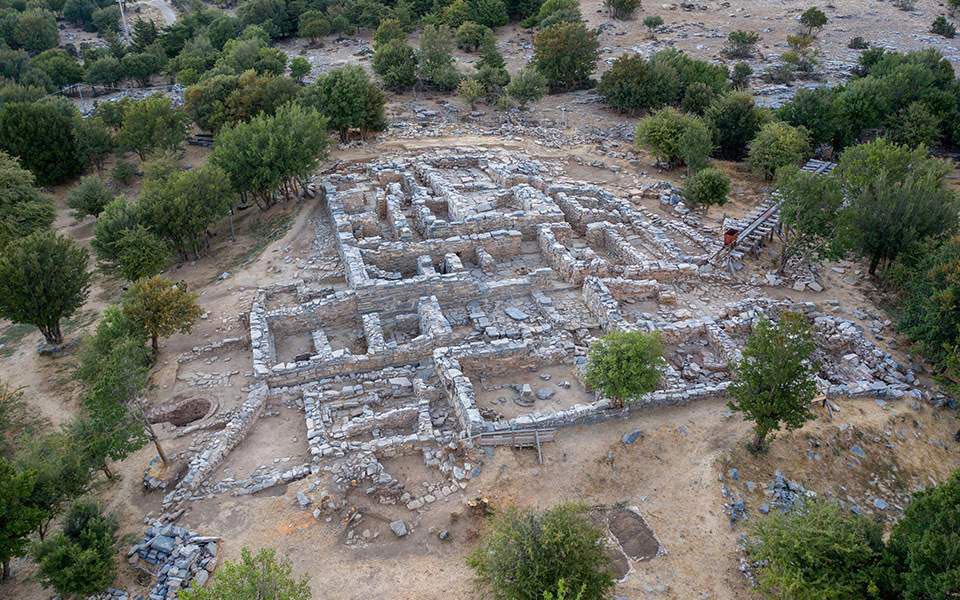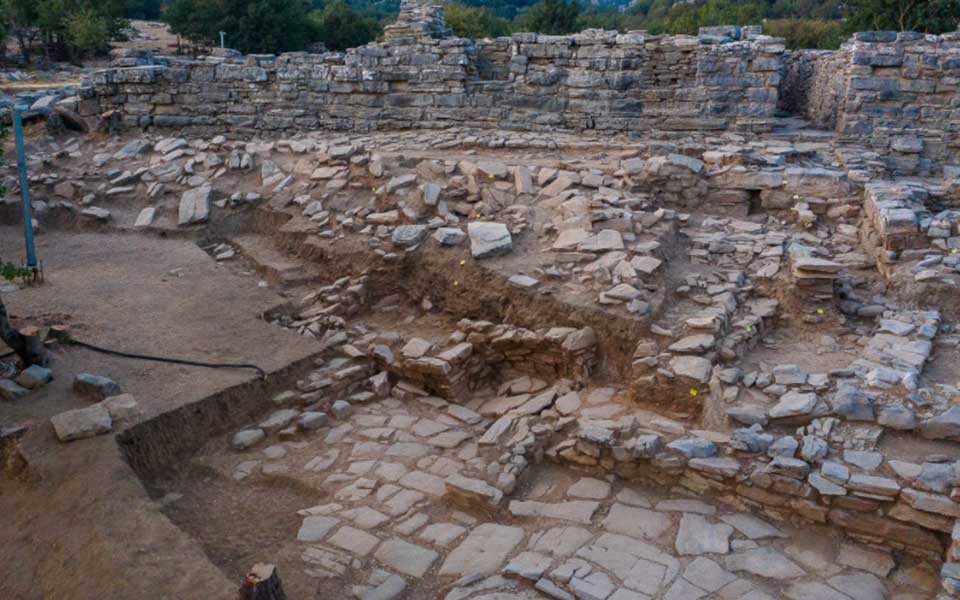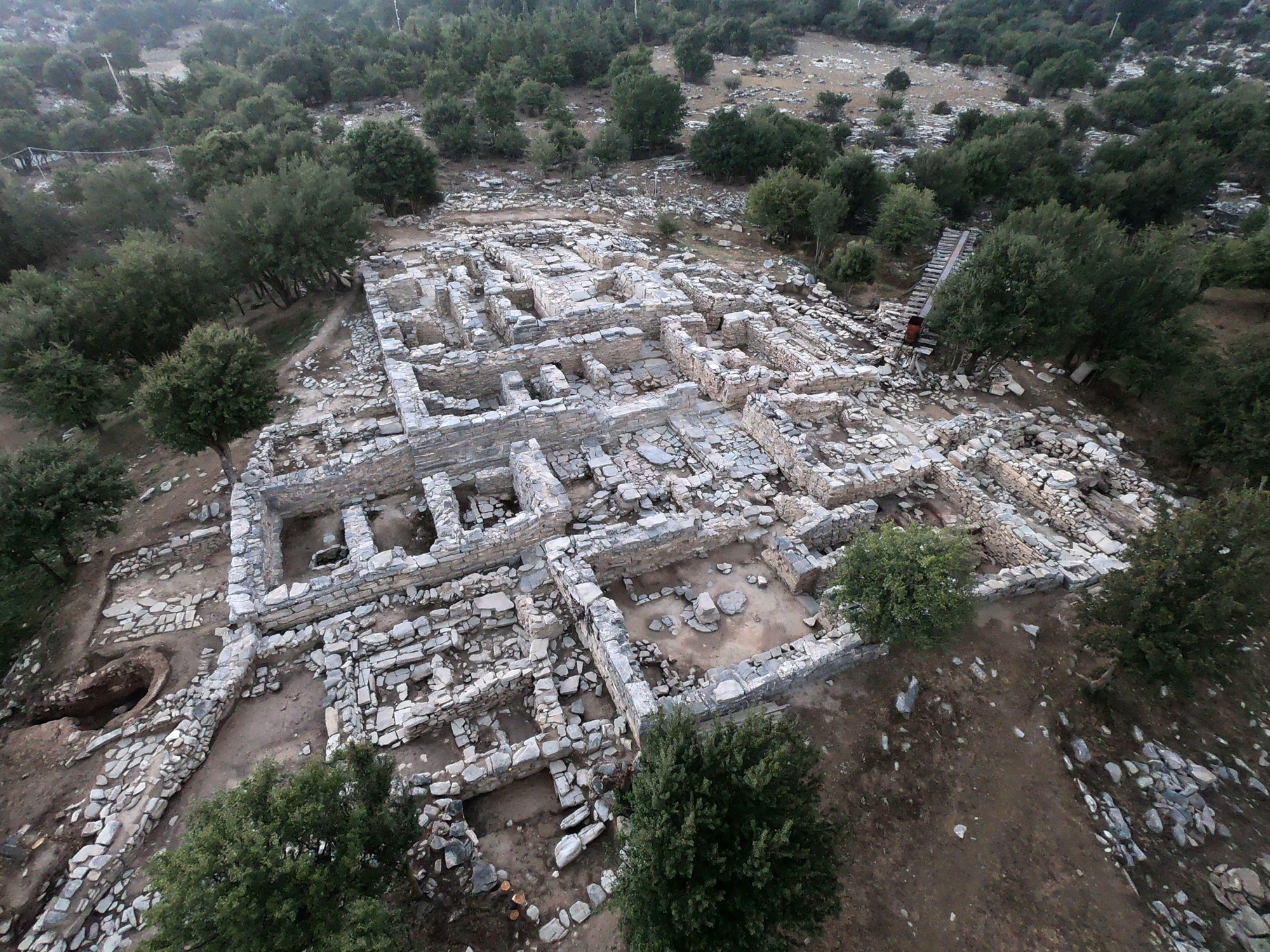Recent excavations at Zominthos Palace, located on a plateau near Crete’s Mount Ida, have revealed significant insights into Minoan civilization and its complex societal structures. This palace, situated at an impressive altitude of 1,200 meters, stands out not only for its mountainous location but also for its strategic role as an administrative, religious, and economic center during the Neopalatial period around 1600 BC. Unlike other Minoan palaces that were typically located in coastal regions, Zominthos was positioned in a more rugged setting, offering access to fresh water and abundant vegetation, making it a vital hub for the surrounding area.
A Strategic and Multifunctional Center
Zominthos Palace is a massive complex, consisting of over 150 rooms, including intricately frescoed halls, workshops, storage areas, and sanctuaries. The site’s layout highlights its multi-functional nature, with specific spaces likely designated for various activities, from religious rituals to economic management. One of the most striking features discovered is a hallway lined with pillars, which leads to a throne room. This suggests the palace was not only a place of governance but also a ceremonial center, underscoring the significant role of authority and ritual in Minoan life.

The discovery of large corridors, private spaces, ramps, stairwells, and paved floors further reveals the sophistication of Minoan architecture and construction methods. The palace’s layout is indicative of advanced urban planning, with careful attention to the flow of movement within the complex. This level of organization likely played a crucial role in the management of the palace’s economic functions, such as the storage and distribution of goods, and reinforced the idea that Zominthos was at the heart of Minoan administration.
Religious and Political Significance
Archaeologists believe that Zominthos Palace replaced the Ideon Andron Cave as a central religious and political site, especially during the winter months when access to the cave would have been limited due to weather conditions. The cave was historically considered a sanctuary dedicated to the Minoan gods, but the palace provided a more permanent and accessible alternative. This shift highlights the importance of Zominthos in the region’s governance and spiritual practices.

Additionally, the site’s continued significance through the Roman and Venetian periods suggests its lasting impact on the cultural and political landscape of Crete, even long after the fall of the Minoan civilization. The remnants of later structures and activities found in the area indicate that Zominthos may have served as a site of continuity in both religious observance and political administration for centuries.
Contributions to Our Understanding of Minoan Life
The excavations at Zominthos Palace, ongoing under the direction of Dr. Efi Sapouna-Sakellaraki, have already contributed significantly to our understanding of Minoan society. This site provides a rare glimpse into the daily lives of the people who once inhabited the palace, shedding light on the governance, cultural practices, and rituals of the time. Furthermore, the advanced construction techniques and intricate planning of the palace offer valuable insights into the engineering and architectural prowess of the Minoans.

The discoveries at Zominthos challenge our previous perceptions of the Minoan civilization, revealing that their palaces were not merely royal residences but rather vital centers of economic control, administrative functions, and religious worship. As ongoing research continues to uncover new features, Zominthos Palace promises to become one of the most important archaeological sites for understanding the complexities of Aegean Bronze Age society.
Conclusion
The excavations at Zominthos Palace are significantly enhancing our understanding of the Minoan civilization, its political, religious, and cultural structures, and its enduring legacy. By uncovering these remarkable discoveries, archaeologists continue to piece together the rich history of Crete, highlighting the complexity of this ancient society and its profound influence on the broader Mediterranean world. The Zominthos Palace, with its multi-functional design and strategic location, is proving to be a key site in unlocking the mysteries of the Minoans and their lasting contributions to human history.

